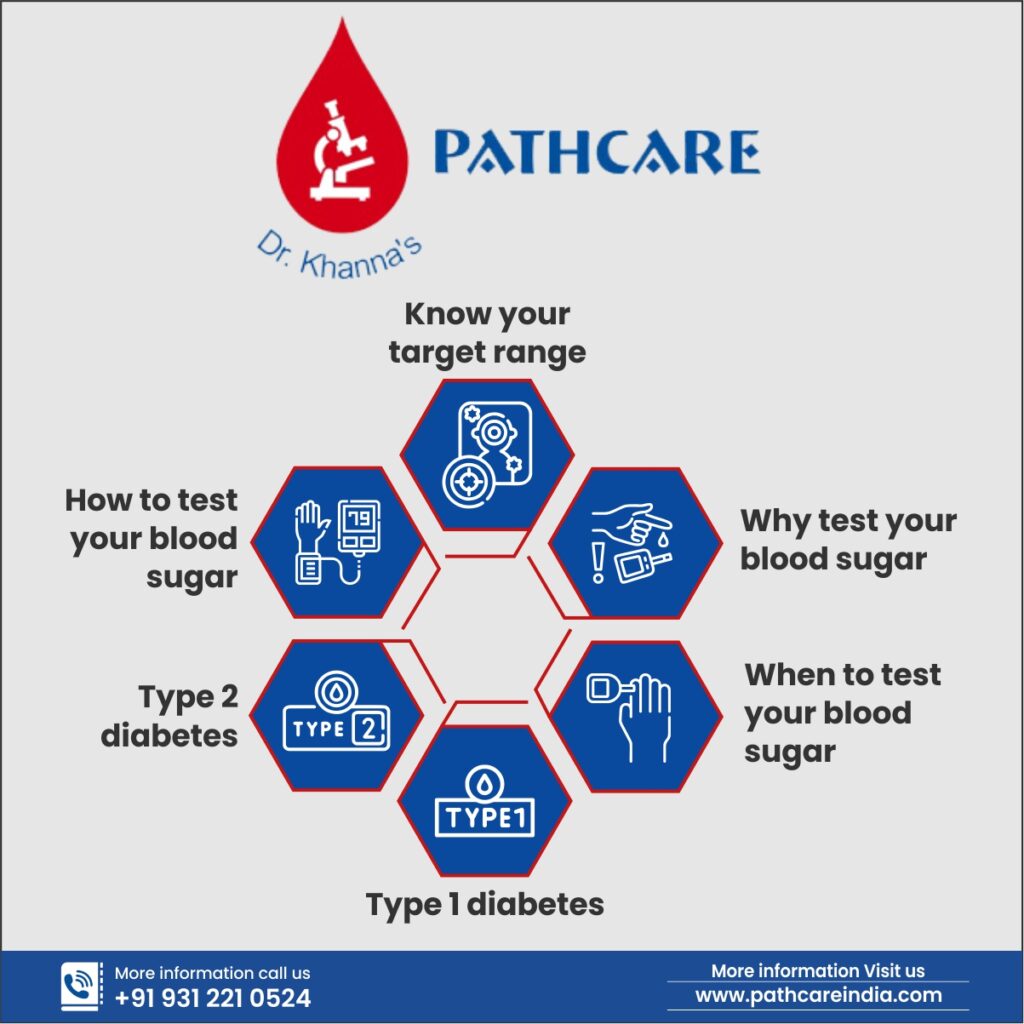No products in the cart.

If you have diabetes, self-testing your blood sugar (blood glucose) can be an important tool in managing your diabetes and preventing complications. It is important to keep your blood sugar levels in your target range as much as possible to help prevent or delay long-term, serious health problems, such as heart disease, vision loss, and kidney disease. Staying in your target range can also help improve your energy and mood. You can use a device called a continuous glucose monitor (CGM). Or you can test your blood sugar at home with a portable electronic device called a blood sugar meter using a small drop of your blood.
Know your target range
Ask your healthcare provider what a reasonable blood sugar range is for you. Your healthcare provider will set target blood sugar test results based on several factors, including:
- Type and severity of diabetes
- Age
- How long you have lived with diabetes
- Pregnancy status
- The presence of diabetes complications
- Overall health and the presence of other medical conditions
Some people will have slightly higher blood sugar goals, including people who:
- Are age 60 and older
- Have other medical conditions, such as heart, lung or kidney disease
- Have a reduced ability to sense low blood sugar levels (hypoglycemia unawareness)
Why test your blood sugar
Blood sugar testing provides useful information for diabetes management. It can help you:
- Monitor the effect of diabetes medications on blood sugar levels
- Identify blood sugar levels that are high or low
- Track your progress in reaching your overall treatment goals
- Learn how diet and exercise affect blood sugar levels
- Understand how other factors, such as illness or stress, affect blood sugar levels
When to test your blood sugar
Your healthcare provider will let you know how often to check your blood sugar levels. The frequency of testing usually depends on the type of diabetes you have and your treatment plan.
Type 1 diabetes
Your health care provider may recommend blood sugar testing 4 to 10 times a day if you have type 1 diabetes. You may need to test:
- Before meals and snacks
- Before and after exercise
- Before bed
- During the night (sometimes)
- More often if you are ill
- More often if you change your daily routine
- More often if you start a new medication
Type 2 diabetes
If you take insulin to manage type 2 diabetes, your healthcare provider may recommend blood sugar testing several times a day, depending on the type and amount of insulin you use. Testing is usually recommended before meals and at bedtime if you are taking multiple daily injections. You may need to test only before breakfast and sometimes before dinner or at bedtime if you use just an intermediate- or long-acting insulin.
If you manage type 2 diabetes with non insulin medications or with diet and exercise alone, you may not need to test your blood sugar daily.
How to test your blood sugar
Blood sugar testing requires the use of a blood sugar meter. The meter measures the amount of sugar in a small sample of blood, usually from your fingertip, that you place on a disposable test strip. Even if you use a CGM, you will still need a blood sugar meter to calibrate your CGM device daily.
Your healthcare provider or certified diabetes care and education specialist can recommend an appropriate device for you. He or she can also help you learn how to use your meter.
Follow the instructions that come with your blood sugar meter. In general, here’s how the process works:
- Wash and dry your hands well. (Food and other substances can give you an inaccurate reading.)
- Insert a test strip into your meter.
- Prick the side of your fingertip with the needle (lancet) provided with your test kit.
- Touch and hold the edge of the test strip to the drop of blood.
- The meter will display your blood sugar level on a screen after a few seconds.
Some meters can test blood taken from an alternate site, such as the forearm or palm. But these readings may not be as accurate as readings from the fingertips, especially after a meal or during exercise, when blood sugar levels change more frequently. Alternate sites aren’t recommended for use in calibrating CGMs.
Type 2 Diabetes is largely caused by a poor diet and a sedentary lifestyle. Here are the 15 tips to keep high blood sugar in control:
1) Eat a balanced diet that includes plenty of fruits, vegetables, whole grains, and lean protein.
2) Limit your intake of processed and sugary foods, as well as high-fat and high-salt foods.
3) Drink plenty of water to stay hydrated.
4) Exercise regularly to help improve insulin sensitivity and control blood sugar levels.
5) Monitor your blood sugar levels regularly and consult with your healthcare provider for personalized guidance on how to manage your condition.
6) Take your prescribed medications as directed and follow up with your healthcare provider regularly.
7) Avoid smoking and excessive alcohol consumption, as both can increase your risk of developing complications from diabetes.
8) Keep stress levels in check, as high levels of stress can cause blood sugar levels to rise.
9) Get plenty of sleep to help regulate blood sugar levels and improve overall health and well-being.
10) Educate yourself about diabetes and stay up-to-date on the latest research and treatments.
11) Join a support group or connect with others living with diabetes to share advice and support.
12) Seek out professional help if you are struggling to manage your diabetes or if you are experiencing symptoms such as extreme thirst, blurred vision, or frequent infections.
13) Take care of your feet and check them regularly for any signs of damage or infection.
14) Keep a record of your blood sugar levels and share this information with your healthcare provider to help monitor your progress and make any necessary adjustments to your treatment plan.
15) Make a commitment to maintaining good blood sugar control and lead a healthy, active lifestyle.





